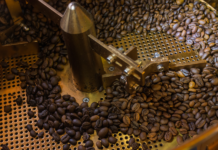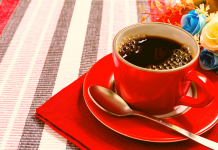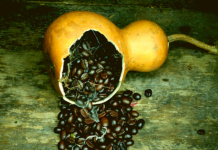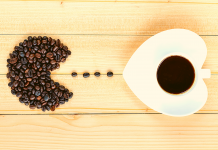Contents
How would the roasting time of coffee beans affect their caffeine content? Coffee is usually consumed for its high levels of caffeine and its ability to energize and offset jitters more so than its taste.
The bitter taste of coffee is hard to ignore and even harder to disguise but coffee serves its purpose in keeping the world caffeinated and functioning. The higher your need for energy is the more caffeine you crave and the more caffeine you want to consume.
The amount of caffeine you ingest may be linked to the jolt of energy you are craving and because of this, persons often end up reaching for a cup of coffee in similar situations across the board.
For instance, having an early morning after a long night, struggling to stay up to pull an all-nighter, some people just aren’t morning people and can not function without their daily cup of joe or even their multiple cups throughout the day, and for some persons, it is merely apart of their daily routine and a form of self-care.
Getting a cup of coffee is instinctive for a number of persons, some persons enjoy the taste of coffee and some people just need it for its caffeinated benefits. Coffee has even become a social outing, who hasn’t heard the phrase “let’s go for coffee” before?
Read More:
- Best Decaf Coffee: All You Need to Know About Decaf Coffee
- Best Coffee For Cold Brew
- Best Coffee On Amazon
- Best Bizzy Organic Coffee
- Best K Cup Coffees
Getting the Highest Level of Caffeine
When seeking a coffee-filled burst of energy, persons usually reach for an espresso shot or a large cup of black coffee. There seems to be an unwritten rule that seasoned and real coffee drinkers drink nothing but black, dark, bitter coffee and anything other than that isn’t real coffee because the darker the bean the better the berry right? This might not actually be correct.
What is the difference between light roast and dark roast coffee beans?


For some reason, we associate dark coffee with being more caffeinated, but in reality, there can be more caffeine in lighter roasted coffee beans. Roasting coffee has become an increasingly popular trend. With the introduction of specialty coffee shops or even Starbucks’ trendiness, roasted coffee has now become a thing.
So much so that more and more persons are attempting to make their own roasted coffee in their own homes. The uprise in lightly brewed coffee beans may be because lighter roasted coffee is considered to have a better taste than black and darker coffee. The lighter blends also provide the option of incorporating different flavors like cinnamon or even chocolate.
When coffee beans are being roasted the heat that is created activates chemicals in the beans. These chemicals are activated at different stages based on how long the beans are left in the heat. There are four main types of coffee roasts. These are light roasts, medium roasts, medium-dark roasts, and dark roasts.
The type of roast depends on the amount of time the coffee bean is roasted in the heat for. Beans that are lightly roasted spend less time in the heat and those that are roasted to be darker in color spend more time in the heat. When coffee beans are roasted they go through a number of changes.
After only a couple of minutes on the heat, the bean pops and expands in size. If the bean is removed at this stage, this would be considered a light roast. The light roast is able to keep the natural flavor of the coffee bean.
To achieve a medium or a medium-dark roast the bean should be left on the heat where it will then be considered dry and the bean would be less acidic than the lightly roasted bean. Finally, the dark roasted bean has a second crack and this bean has a more bitter flavor than the other roasts. The bean also appears shinier than the beans that have been roasted for less time.
Since dark beans are roasted longer than lighter beans this results in them having less mass because the water in the coffee beans evaporates more and more throughout the roasting process.
This results in the beans being larger than the beans that are lightly roasted. As the bean is just beginning its expansion process at the lightly roasted stage. The evaporation of the water and the size of the beans also lead to the level of caffeine in the coffee bean.
So technically, lighter roasted beans have higher caffeine than that darker roasted beans. Therefore, the less time a bean spends being roasted, the more caffeine they have. Because of this statement, you may be thinking that if the lighter the bean the higher caffeinated the coffee is, then green beans should be the highest source for caffeine.
Ingesting green coffee beans is not recommended in any way. Unroasted coffee beans are literally green and in order to achieve the undeniable rich coffee flavor, these beans need to be roasted. If green beans are attempted to be consumed without the roasting process it would result in a green grassy flavor that is in no way appealing.
Read More:
- Best French Press: Mueller French Press Review
- Wacaco Minipresso Review: Pros, Cons, & Final Thoughts
- The Best Single Serve Coffee Makers: In-Depth Review
- Our Top Pick: Breville BDC450 Review
- 10 Best Siphon Coffee Makers in 2023
Is There Really a Difference?
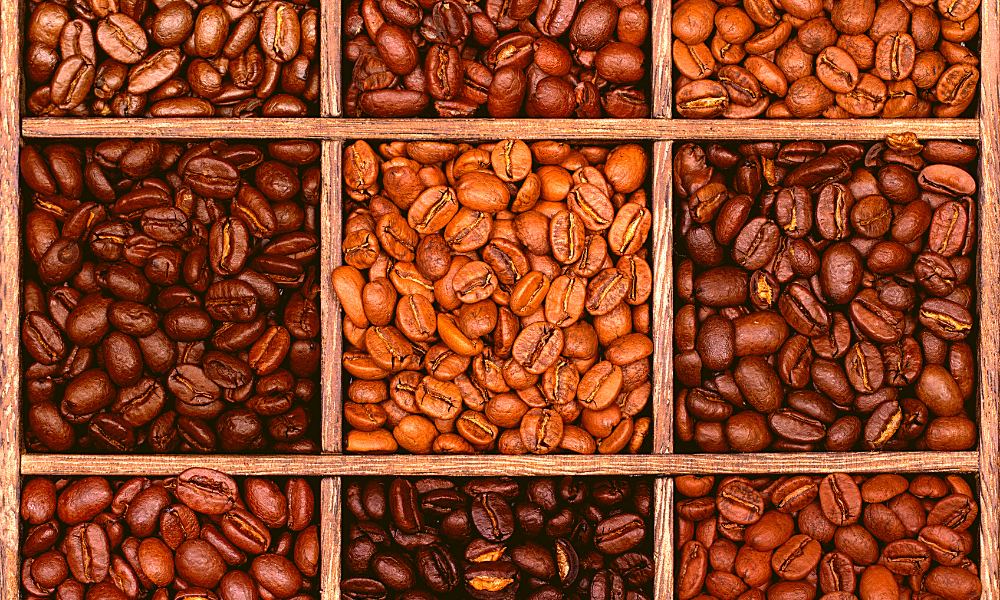

Saying lighter roasted beans are more caffeinated than darker beans is a bold statement and you may be wondering how would the roasting time of coffee beans affect their caffeine content.
Although the beans are actually more caffeinated, it is important to note that if you take 8gs of a lightly roasted coffee bean it has the same amount of caffeine as 8gs of a dark roasted coffee bean. So basically, one scoop of lightly roasted coffee has the same amount of caffeine as one scoop of dark roasted coffee.
This may sound like a contradiction, but lightly roasted coffee beans only contain a higher level of caffeine because the beans are denser. As mentioned, the longer the bean stays in the heat the more the water evaporates therefore light coffee beans are denser because the majority of the water has not evaporated as yet.
Because of this, one single lightly roasted coffee bean has more caffeine than one single dark roasted coffee bean. However, the actual difference in the caffeinated level is so small that truth be told, the roasting time does not play a huge difference.
The difference is more noticeable in the taste and the color of the beans. The time in which coffee is roasted not only affects the color of the bean and the level of caffeine but also affects the taste.
It is surprising that darker coffee, which has a stronger taste does not have more caffeine than lighter coffee with its milder taste. This is because the heat that is present during the roasting process activates chemicals that lead to the flavor of coffee we are used to as well.
Although the roasting time of coffee beans affects their caffeine content, the main factor is the measurement of the coffee. No one serves coffee by counting out single coffee beans. Therefore it can be said that the amount of caffeine you want to ingest depends on the amount of coffee you drink rather than the type of coffee you drink.
Coffee was initially dark roasted because the quality of the coffee was so terrible, the bitter taste was used to mask the poor quality. However, the quality of coffee has drastically improved and so has the taste. Therefore it is possible to retain the natural flavor of the coffee by lightly brewing it. Thus having a sweeter taste as opposed to the bitter taste that coffee is associated with.
Roasting Coffee at Home


Not only has the quality of coffee increased but also the quantity. Coffee beans can be bought from pretty much anywhere and they are pretty easy to get. Due to its accessibility and affordability, the desire and need to roast coffee drastically reduced, however roasting your own coffee has now become trendy.
By roasting your own coffee you can control the taste as well as experiment with the flavor if you so wish. While roasting your own coffee beans is an additional step to the at-home coffee-making process, it is not complicated.
There are many methods to roast green coffee beans at home. After purchasing the beans, there are three at-home methods to consider. These options are oven roasting, roasting in a popcorn machine, and using a home coffee roaster.
The actions required for great-tasting at-home brewed coffee depends on the device used, however, the type of method you use to roast your coffee beans does not affect the flavor or the caffeine level.
The flavor of the bean depends on the amount of time it is left on the heat. However, the longer it is left on the heat will increase the bitterness of the bean and you should select the level of roasted beans based on your personal preference.
One important factor to note is that coffee beans should not be brewed immediately after the beans have been roasted. It is recommended that you wait a couple of days to a couple of weeks to brew your coffee after you have roasted it at home. It is important to note that lightly roasted coffee can be brewed longer after you have roasted it than darker coffee.
Read More:
- Best Manual Coffee Grinders
- Best Coffee Liqueur
- Best Electric Coffee Grinders
- Best Mr Coffee Espresso Machines
- Best Nespresso Espresso Machines
How Would The Roasting Time Of Coffee Beans Affect Caffeine Content? What Really Is The Truth?
The truth is lighter roasted coffee beans have a higher amount of caffeine in them than dark roasted coffee beans, but the difference is so insignificant that it really doesn’t matter. The amount of time roasting the coffee beans is more important for the taste you want so you should keep that in mind when making your decision.



